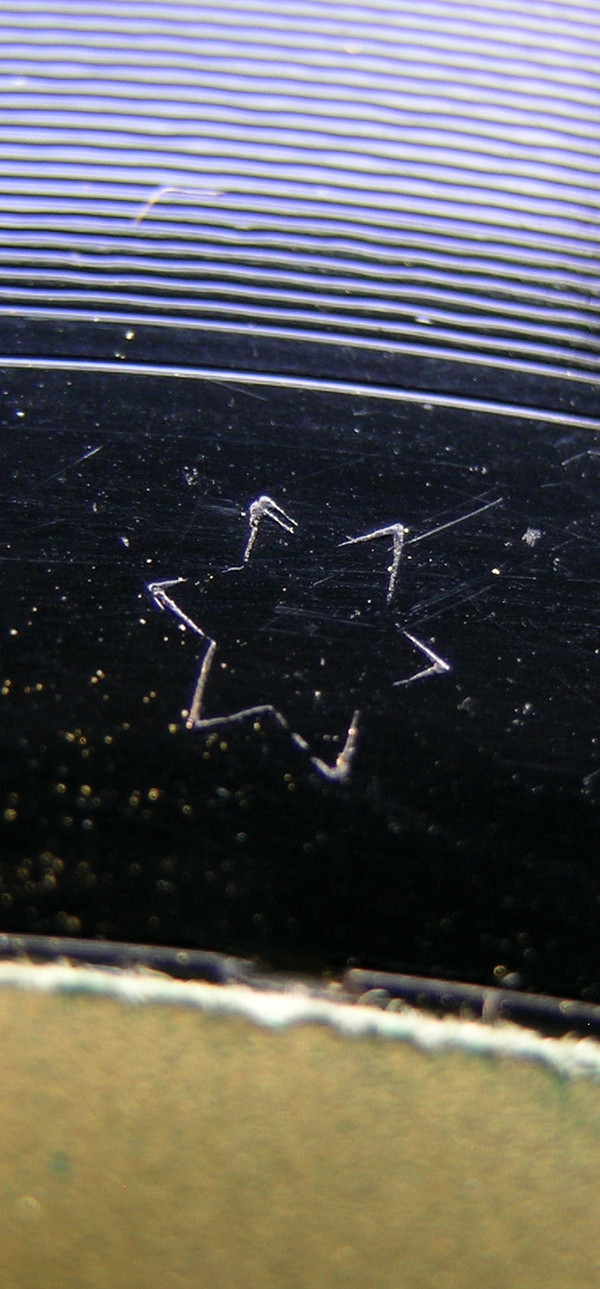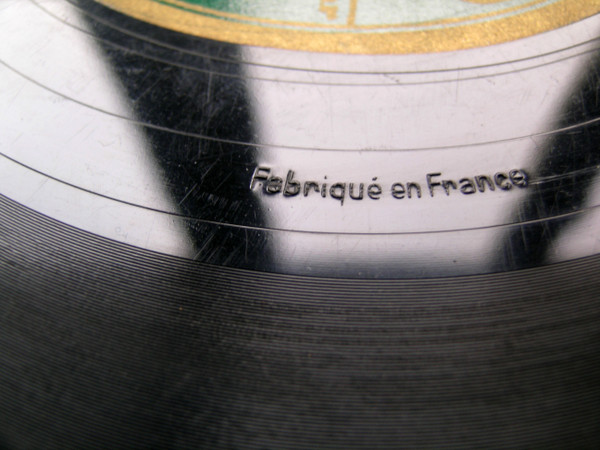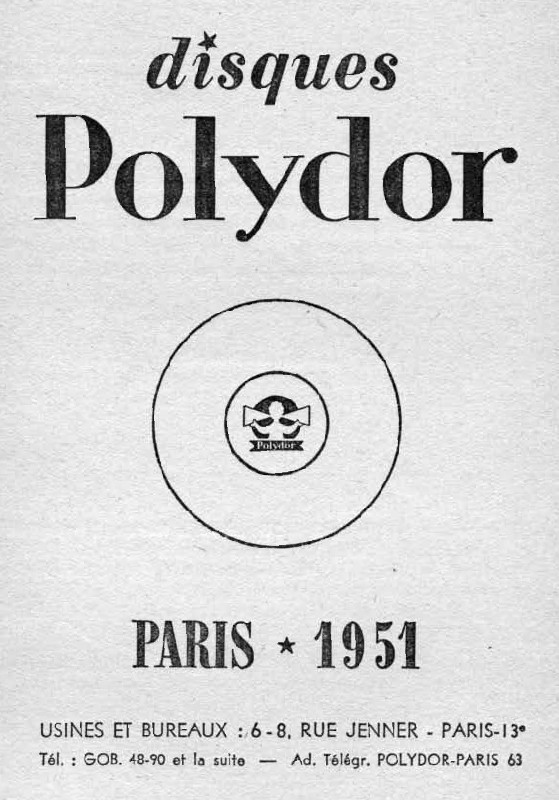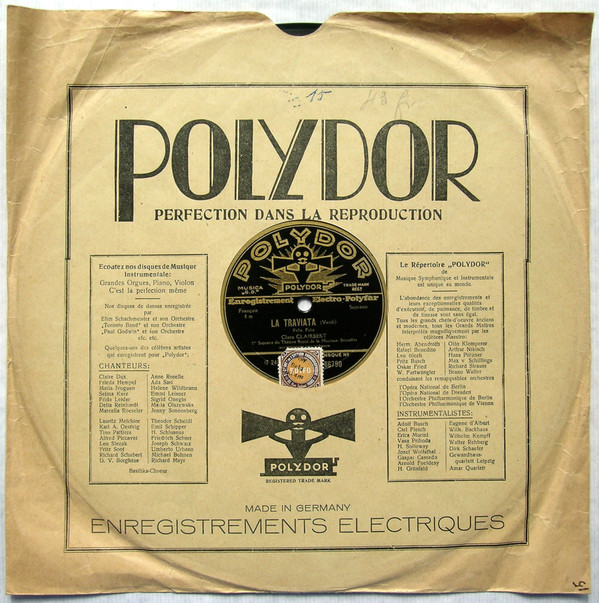Société Phonographique Française Polydor S.A.
Настоящее имя: Société Phonographique Française Polydor S.A.
Established in 1927 (Paris, France), Société Phonographique Française Polydor S.A. (SPFP) was the french subsidiary of Polydor. The company also managed a pressing and a cutting facilities in Paris. In 1951, renamed Société Phonographique Philips after the takeover by Philips Phonografische Industrie.
Time line
1927: Société Phonographique Française Polydor S.A. (SPFP) is founded by the Danish Nordisk Polyphon Aktieselskab and the Swedish Nordiska Polyphon Aktiebolaget, subsidiaries of German Polyphonwerke A.-G.. Until 1929, through Hohner (24, rue des Petites-Ecuries, Paris,10ème), the company distributed records produced, recorded and pressed in Germany, Berlin by Polydor.
1929: In order to avoid import costs, a pressing plant is installed boulevard de la Gare,72-74, Paris as well as a plating facility (galvanoplastie) rue Jenner, 6-8, Paris in late 1929. The plant pressed records with "metal parts" or "stampers" from Polydor, Germany (B on matrix sheme BKP and BMP), but very soon, SPFP also recorded in Paris using firstly the Salle Bullier (31, avenue de l'Observatoire, Paris).
1930: [a837303] is engaged as artistic director.
1933: SPFP reorganized its installations.
- The pressing plant is transferred from boulevard de la Gare,72-74, Paris,13ème (boulevard Vincent Auriol since 1976) to 6-8 rue Jenner, Paris, 13ème.
- The plating facility (galvanoplastie) is relocated from 6-8 rue Jenner, Paris, 13ème to rue Bruant, Paris, 13ème, a cross street of the rue Jenner. The space freed up will be used as headquarter (HQ) by the company.
- In early 1933, a new recording studio (Les studios du boulevard de la Gare, Grande Salle et Studio 2) is builded boulevard de la Gare,72-74, Paris,13ème, after the relocation of the pressing plant. This recording studio starts his activity from April 1933 onwards, with the help of engineers transferred from Polydor, Germany.
1934: Pierre Bourgeois joined [a837303] as artistic director.
1941: Pierre Bourgeois is replaced by Jack Coulon as artistic director.
1951: Philips Phonografische Industrie taken over SPFP and his catalog and became the french subsidiary of Philips. Then renamed Société Phonographique Philips, the new company used the same HQ (rue Jenner, 6-8) and also the pressing plant, before moving its production at Louviers in 1957. From 1951 until 6 March 1956, both SPFP and Philips share the same matrix suffixes (ACP, LPR, e.g.) for their french releases.
Matrix shemes
SPFP' pressings and/or recordings can be identified in the runout groove area by a prefix composed by 4 numbers and followed by 1 to 4 letters [u]always ended by a "P"[/u] (= pressed by SPFP), but most of the time, the suffix is composed by 3 letters :
#### XYZP (e.g. 1812 BMP, 2911 BKP, 6502 LPP, 6401 JSPP, etc)
"X" or "Y" = engineer signature (K = König, H = Rudolf "Rudy" Hamburger, S = Robert Sergent, a.o.). Engineers König and Hamburger (until 1939) were been transfered from Germany. Robert Sergent (who had replaced Hamburger in 1939) was also the owner of Studio Technisonor, Paris, a recording studio [u]sometimes[/u] used by SPFP (from May 20, 1941 to July 20, 1941. Matrix 5416 to 5453).
"Fabriqué en France" and later "Made in France" may appear in runouts with a "six pointed star symbol" (see images).
From late 1929 to circa. 1944, "Mechan.Copt.19##" is sometimes stamped in runouts. "19##" is the recording and the lacquer cutting date, [u]not necessarily the date release[/u].
Until 1942 (#### JSPP), ½, ¾ or 4/4 may appear in the runout groove areas between the prefix (4 numbers) and the suffix (3 or 4 letters). This indicates the 'take' during the recording process and which one was used:
none = take 1
½ = take 2
¾ = take 3
4/4 = take 4
From 1942 onwards, these fractions may appear as 'none', ¹, ², ³.
'%' after a 'take #' means that a part of the track was re-recorded separately and added to the take.
[u]Important note:[/u]
Sometimes, SPFP released different 'takes' (with some variations) [u]under the same cat.#[/u] (5##.###). In some cases, different takes were mixed (composite mix). If the fraction vary from one released to the other with the same cat.#, please add a new submission.
Date release (from matrix shemes in runouts)
[u]Note[/u]: SPFP pressings start in late 1929 with metal parts from Polydor, Germany (circa. [u]2500 BKP to 6707 BKP[/u] (10"/25cm) in runouts, or #### BMP (12"/30cm). Concerning 10"/25cm, we have reliable information from 1933 only, when most of the SPFP releases were recorded and pressed in France. However, between 1929 - 1933, SPFP had recorded some productions here and there and pressed them with their own lacquer cuts and "metal parts" (see Boléro (1re Et 2e Parties), 1812/13 BMP on runouts).
[u]10"/25cm[/u]:
May 1933 - March 1956
1933 = 6309 to 6707 BKP and 5728 to 5774 BDP
1934 = 5775 to 5864 BDP and 1000 to 1562 WPP
1935 = 1563 to 1889 WPP and 1954 to 2224 HPP
1936 = 2225 to 3129 HPP
1937 = 3130 to 3974 HPP
1938 = 3975 to 4800 HPP (4310 to 4365 and 4622 à 4731 = arabian recordings)
1939 = 4801 to 5184 HPP and 5185 to 5235 SPP (4983 à 4998 = arabian recordings)
1940 = 5236 to 5407 SPP (5356 to 5369 = arabian recordings)
1941 = 5408 to 5460 SPP and 5461 to 5474 DRPP
1942 = 5475 to 5480 DRPP, 5481 to 5499 SPP, 5500 to 6029 (= arabian recordings pressed for Polyphon Record ), 6030 (lacquer cut = March 25, 1942) to 6153 DRPP and 6154 to 6191 JSPP
1943 = 6192 to 6378 JSPP (JSPP, SPP, RSPP co-exist until 1945).
1944 = 6379 to 6382 JSPP, 6383 to 6387 TPP, T1 to T32 (recorded and pressed for Telefunkenplatte G.m.b.H.) and 6388 to 6401 JSPP
1945 = 6402 to 6444 JSPP (until October 30, 1945)
1946 = 6445 (March 18, 1946) to 6569 LPP
1947 = 6570 to 6589 and 6594 to 6649 LPP (= arabian recordings), 6590 to 6703 LPP (June 16, 1947), 0001 (September 11, 1947) to 0068 ACP
1948 = 0069 to 0386 ACP (0184 to 0201 and 0204 to 0227 = arabian recordings)
1951: SPFP and Philips share matrix shemes (ACP < until March 6, 1956 = matrix ACP 4031, LPR, a.o.) until 1956/57. ACP = Acétate Chopin-Pleyel and means that the mastering and the lacquer was cut at Studio Chopin-Pleyel.
[u]12"/30cm[/u]:
1930-1945
1930-35 = min. 1810 BMP to 2475 BMP
1936-40 = ?
April 3, 1940-45 = 501 GSPP to circa. 1200 GSPP
[u]How to enter the matrix number in the LCCN fields[/u]:
• Please only enter the "#### XYZP" part (the amount of letters may vary), with the fraction ("take") if it appears (e.g. 1812 ½ BKP).
• If a release shows 2 of these numbers, please enter each in a separate field.
Catalog numbers
All french Polydor cat.# start with the number 5.
25cm/10" : 521.5## (start in 1930), 522.### (start in 1931), 524.### (from late 1934 until 1945), 530.### (50's), 550.###, 560.### (start in mid 1946), 561.###, 590.### (start in early 1943), 590.1## (late 1942 until mid 1946)
30cm/12" : 516.5## (circa. 1931 until 1945), 566.###, 595.### (start in spring 1931)
Know to have pressed for (circa. 1936-1940):
Atout (7### AP or APP in runouts)
Colisée (7### AP or APP in runouts)
Curtiphone (10### or 11### on labels and in runouts)
Etoile Musette (10### or 11###)
Galfadisc (Galerie Lafayette, 7### AP or APP in runouts)
National (10### or 11###)
Pagode (7### AP or APP in runouts)
Philips (from 1951 until March 6, 1956. ACP, LPR, etc. in runouts)
Vibraphone (233, faubourg Saint-Honré, 10###)
La Voix Des Notres (10### or 11###)
Yvon Allouche (10### or 11### SK in runouts, ALL as cat.# prefix)
Coucou (3### AP)
Recording locations:
Salle Bullier (until 1933)
Les studios du boulevard de la Gare (Grande Salle and Studio 2), builded by SPFP. Start its activities from circa. April 1933.
Studio Technisonor, Paris (1939/11/27 until 1945/10/30)
Studio Chopin-Pleyel (until 1953)
Théâtre De L'Apollo (from 1953)
Engineers known to have worked at SPFP:
König (K in BKP matrix, transfered from Germany until 1939)
Rudolf "Rudy" Hamburger (H in runouts, transfered from Germany until 1939)
Robert Sergent (S in SPP, JSPP and RSPP matrixes, owner of Studio Technisonor, Paris)
Georges Cailly (technical director 1945-60)
Pierre Fatosme
[u]Note[/u]:
SPFP used white label for reissues (see Boléro (1re Et 2e Parties) and compare with Boléro).
Obsolete:
6-8 rue Jenner, Paris (13ème)
Tel: GOB. 48-90
Télégram: POLYDOR-PARIS 63









